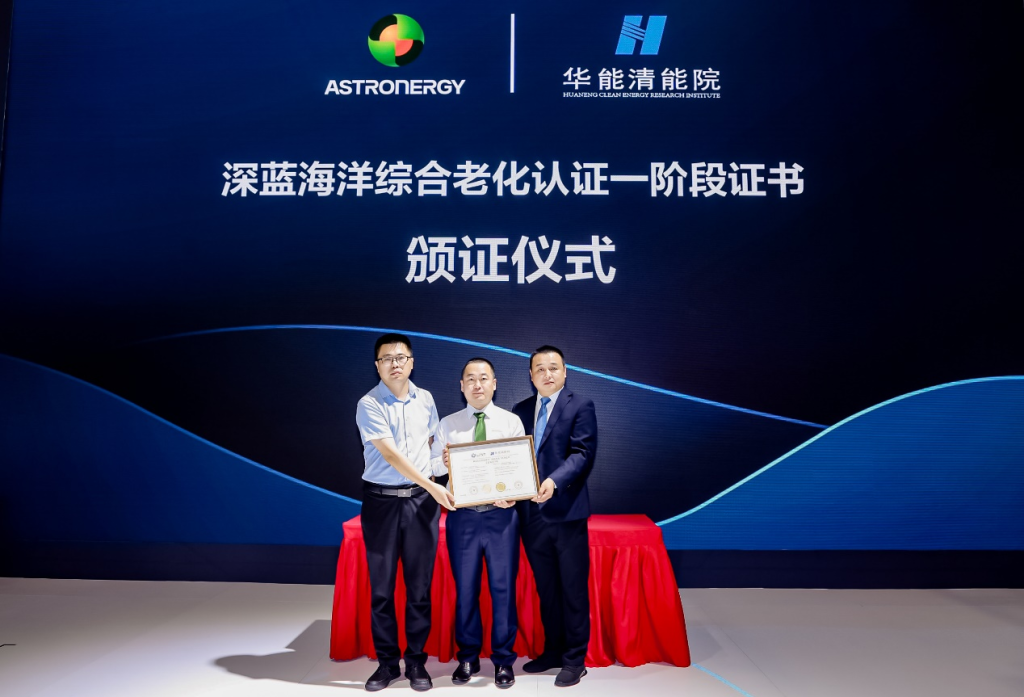


On June 13th, Astronergy ASTRO N series won the "Deep Blue Ocean Comprehensive Aging Certification Phase One Certificate", issued by the National Center of Supervision and Inspection on Solar Photovoltaic Product Quality (CPVT) and China Huaneng Group Clean Energy Technology Research Institute (Huaneng Qingneng Institute) at the SNEC exhibition, solidly proving Astronergy PV modules’ high efficiency and stable operation in the offshore application scenario, recognizing Astronergy’s scenario oriented product development. At the same time, Astronergy announced the initiation of the Jiayuguan Gobi certification to further test the strength of its scenario-based products in the desert.
As an intelligent manufacturing enterprise focusing on PV modules, Astronergy has long been concerned about product utilization in offshore scenarios and has introduced enhanced floating PV module technology solutions.
Compared to land-based environments, offshore PV modules have been optimized at the module encapsulation technology; adopting low water permeability adhesive film to reduce water vapour ingress; using double-coated glass to prevent salt spray corrosion; and adding high sealing design for junction boxes and connectors to improve water resistance.
In CPVT and Huaneng Qingneng Institute test, Astronergy's main products, ASTRO N7 and ASTRO N5, both passed the full-spectrum comprehensive ageing test, level 7 salt spray and other tests, and the test results showed strong resistance to water vapour intrusion.

At the SNEC, Astronergy also launched the Gobi-proof testing with Huaneng Qingneng. During the one-year testing period, the two parties will continuously monitor the actual performance of ASTRO N5 and ASTRO N7 series PV modules in the Gobi's high-temperature and strong ultraviolet environments, to record the various performance indexes and uniqueness of the TOPCon modules.
In the future, Astronergy will intensify its module R&D efforts and verify the excellent reliability of ASTRO N series modules in multiple dimensions to ensure the safety of the power plant system under extreme weather conditions and the whole life cycle of power generation revenue, bringing higher value to users in different scenarios.
